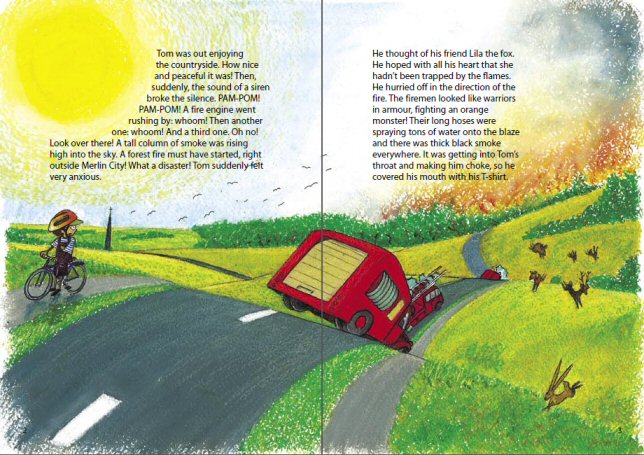Yesterday, the European Commission published its proposed policy framework for climate and energy policy to 2030. It proposes two high-level goals while retreating from setting more specific targets for individual sectors and technologies. The over-arching goal is a greenhouse gas emissions reduction target for domestic EU emissions of 40% in 2030 relative to emissions in 1990. The proposal met with a mixed reaction and must still go through the legislative process in both the Parliament and the Council.
The Commission’s assessment is that the policies and measures implemented and envisaged by member states in relation to their current obligations to reduce greenhouse gas emissions, if continued after 2020 and fully effective, would deliver a 32% reduction relative to emissions in 1990.… Read the rest
What Durban means for EU agriculture
Agriculture, uniquely, has a dual role in climate change discussions. It faces significant adaptation challenges as global temperatures rise and there is a greater frequency of extreme weather events. But it also has the potential to help mitigate climate change through reducing emissions and removing them through carbon sequestration.
In this post, I ask what the implications of the outcome of the Durban UNFCCC climate conference might be for EU farming and agricultural policy.
Agriculture and EU emission targets – where we stand
Agriculture is included in the accounting for the EU’s Kyoto Protocol emission reduction targets for the period 2008-2012 and in the Climate and Energy Package (CEP) 2020 target of a 20% reduction in global greenhouse gas emissions over the 1990 base year.… Read the rest
Carbon efficiency and trade policy
In an earlier post, I wondered whether there were data on the relative carbon efficiency of agricultural production in Europe versus third countries. A recent FAO study arising from a collaborative effort by FAO and the International Dairy Federation which assesses GHG emissions from the dairy food chain throws light on this. The study uses a Life Cycle Analysis (LCA) approach, and thus includes the land use change induced by the consumption of feed (principally soybeans) in intensive dairy systems.
The results are unambiguous:
… Read the rest“A global trend emerging from the results is the lower level of emissions per unit of product in intensive compared to extensive systems.
Informal meeting Agricultural Ministers in Sweden 14-15 September to discuss agriculture and climate change
The Swedes have chosen to highlight agriculture and climate change at the informal agricultural council meeting next week. The discussion will be built around three questions:
… Read the rest1. Climate change is of great concern for the future competitiveness of EU agriculture and this challenge is being dealt with at all levels. While the framework is set at EU level, implementation will need to be carried out at farm level.
What should be the role of the EU regarding mitigation and adaptation in agriculture, and, in particular, what should be the key areas of cooperation?
2. An instrument in handling climate change in the agricultural sector is rural development programmes.
Is EU agriculture carbon-efficient?
A relatively new argument being used to justify support for agricultural production in the EU is that reductions in EU food production would be made up by increases elsewhere where less efficient production systems exist and thus would result in a heavier carbon footprint. This raises the question whether this statement is factually correct and what do we know about the relative carbon efficiency of production systems in different parts of the world?… Read the rest
Vision for the future of the CAP
The influential Land Use Policy Group will be launching their vision for the future of the CAP after 2013 in Brussels on March 30th. This will be an important event in the long-term effort to clarify thinking about future policy so that it delivers benefits to the environment and rural communities.… Read the rest
The methane menace and hamburgers
A paper on the contribution to climate change of livestock methane emissions has found that the problem is likely to get worse as global demand for meat and dairy products increases. Dr Andy Thorpe, an economist at Portsmouth University, found that a single herd of 200 cows can produce annual emissions of methane roughly equivalent in energy terms to driving a family car 180,000 km.… Read the rest
New Humboldt University report on global market trends
Another study forecasting higher real food prices for the next decade has recently been published by three authors associated with the Humboldt University in Berlin led by Professor Harald von Witzke. The working paper provides a useful qualitative survey of the reasons why agricultural supply will have difficulty in keeping up with the demand for food and other products of agriculture (including bioenergy). For the more technically minded, it uses a partial equilibrium multi-market model (descended from the venerable SWOPSIM model once supported by the US Department of Agriculture) to provide quantitative estimates of price levels for the key grains and oilseeds which are the focus of the study.… Read the rest
France asks "Who will feed the world?"
The French government has launched a new website as part of the run-up to a conference it will hold on 3 July, at the very beginning of France’s 6-month EU Presidency, to discuss the future of European and global agriculture. Entitled “Qui va nourrir le monde?” (Who will feed the world), the debate is being organised around six questions, divided into two groups. Find out more after the jump…… Read the rest
France asks “Who will feed the world?”
The French government has launched a new website as part of the run-up to a conference it will hold on 3 July, at the very beginning of France’s 6-month EU Presidency, to discuss the future of European and global agriculture. Entitled “Qui va nourrir le monde?” (Who will feed the world), the debate is being organised around six questions, divided into two groups. Find out more after the jump…… Read the rest

